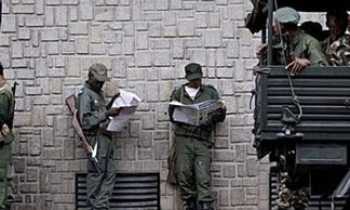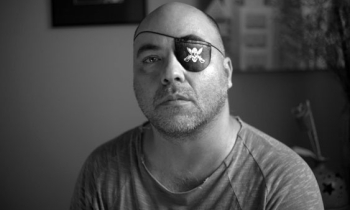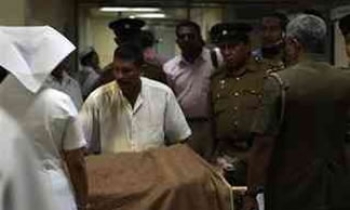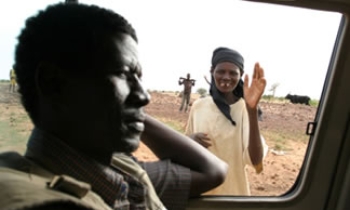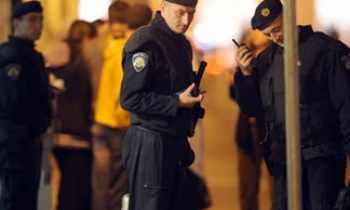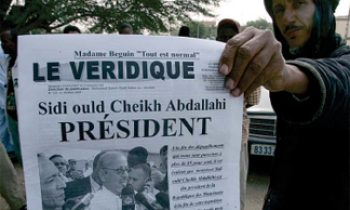SAGO, W.Va. -- The storm kicked up sometime before dawn Monday, sweeping across the scabbed mountains and bare winter woods with enough ferocity to jolt people awake in this Appalachian hamlet. County Commissioner Donnie Tenney felt his blue farmhouse rattle. Thunder, he thought. The phone roused him again. It was his sister. Someone from her prayer chain had told her there had been an explosion at the Sago Mine. Men were trapped.
Six miles away in Buckhannon, Upshur County's only incorporated town, tiny St. Joseph's Hospital prepared for multiple casualties. At the small Baptist church down the muddy road from the mine, anxious families slowly gathered. Nineteen men had entered the coal mine that morning. Only six had escaped.
"With each hour that passes, the likelihood of a successful outcome diminishes," reported Bennett K. Hatfield, president of International Coal Group Inc., which owns the mine. The tiny hollow was soon a jumble of network satellite trucks, emergency vehicles and the black cars of state officials.
For 44 heart-wrenching hours, an extraordinary drama would unfold before a watching nation, a tragedy made cruel not because hope was abandoned, but because it was embraced. Jubilation would evaporate into blind rage, prayers would become curses and uncertainty would swell into terrible accusation.
Twelve bodies would eventually be pulled from the Sago Mine.
But the toll was much greater than that.
The first day passed in a blur of uncertainty. Upshur County was once dominated by coal, but now the mines were scattered and few. It was still considered good work in a depressed region, and some of the miners drove an hour or more to work at Sago. It wasn't uncommon to find fathers and sons, uncles and brothers following one another into the deep tunnels.
Now, even after a new generation found work in the small businesses or big retail chains that have come to dominate the landscape, the community suddenly found itself pulled to the mines again. Quietly, efficiently, the rituals of comfort and solace were set in motion. At Sago Baptist Church, the Red Cross appeared with cots and blankets and headache medicine. Women arrived at the church with baked hams and potato salad and homemade cakes. Counselors and preachers circulated among the distraught family members.
Sago Mine had been cited for scores of safety violations, but officials from International Coal, which took ownership and began running the mine in November, said none posed the immediate threat to miners' lives that would have prompted mining regulators to close it down.
After the explosion, it took 24 hours for rescuers to create a road for drilling equipment, pinpoint the location and complete the hole that gave them their first glimpse into the area where they believed the miners were located.
The mine was shaped like a backward capital F, with the stem two miles long. Rescuers were guessing that the miners were in the farthest corner from the entrance; they established a fresh-air base half a mile from that spot. Teams with oxygen gear would communicate by hand-held radio to the fresh-air base, which in turn would use a crude phone to report to a command center above ground where Hatfield and other officials waited.
The mining officials trekked to the church and the media site for occasional briefings. The initial news was grim: Carbon monoxide levels in the mine far exceeded the level that would allow human survival. A microphone was lowered into the earth, and rescuers pounded away 260 feet above, hoping survivors might hear, but there were no sounds in response. "We are clearly in the situation where we need a miracle," Hatfield told reporters Tuesday afternoon, "but miracles happen."
The explosion appeared to have come from a sealed inactive part of the mine; the exact cause is still under investigation, but it "resembled" a methane blast, Hatfield explained. When cameras found no signs of collapse or major damage from the blast, those gathered in the church began reassuring one another that maybe the men could survive, maybe they had escaped to a safe pocket somewhere. "Maybe," one hopeful woman told television reporters, "they got on the other side of the air."
Helen Winans, waiting for word about her 50-year-old son, Marshall Winans, was annoyed at the way people kept asking their what-if questions when officials appeared for briefings. Marshall Winans's wife and three grown children were there, and siblings and in-laws, and friends as well. "I told them all along that whole crew was comin' out alive," Helen Winans recalled. "Miracles do happen."
The Rev. Jerry Murrell, pastor of the Way of the Holiness church in Buckhannon, was one of the local clergy members keeping vigil with the families at Sago Baptist. "There were times of intense prayer, and times of softly singing hymns," he said. "Ministers would take turns reading Scripture. The one we seemed to keep turning back to was Romans 8:28 where the Apostle Paul promises that all things work together for good to those who love God."
On Tuesday night, the first body was found 11,200 feet from the entrance portal of the mine. The portal bus that would have transported the missing crew was discovered intact.
Rescue crews pushed deeper into the mine. Inside the church, relatives dozed on pews or cots. But tension was growing, and people began retreating to their cars for respite. Helen Winans decided to try to catch a nap in her truck. She awoke to find her grandson pounding on the window shortly before midnight. "Hurry!" he cried.
Murrell was standing inside the church talking to Gov. Joe Manchin III when they heard someone suddenly scream, "They're alive! They're alive!"
"There was just this roar of jubilation," the preacher said. People fell into one another's arms, laughing and weeping. "People were dancing, praising God, thanking Him."
Underground, rescuers had heard moaning and found the spot 13,225 feet deep into the mine where the miners had barricaded themselves behind one of the thin plastic curtains called battices used to direct air flow or close off an opening. All appeared to have used the breathing apparatuses that provide oxygen for an hour, mining officials found.
It was at this point, Hatfield told a news conference later Wednesday, that the disastrous chain of miscommunication began. The moaning miner was in extremely critical condition. Speaking through a full-face oxygen mask, a rescuer radioed word up to their fresh-air base, which then contacted the rescue command center, and "said 12 were alive," Hatfield recounted. Within minutes, the church bells were ringing and the hollow was mobbed with cheering townspeople and families. The relatives waited to hear when they would be reunited with the loved ones they had feared dead.
"We were told they would be coming to the church to greet their families," Murrell recalled. "They even told us which door they would come in, and how to prepare, that immediate family members should line up first. People were singing songs, kids were dancing in the aisles. The exuberance just began to build, it was just unbelievable."
In Buckhannon, nurses at St. Joseph's had cleared a wing on the second floor for the dozen miracle patients the hospital expected any minute. Extra staff members were called in, hospital spokeswoman Lisa Turner said, and 12 teams were assembled so no miner would have to wait for treatment. Warming blankets were prepared, and IV poles set up. A special yellow decontamination tent was set up in case any survivors had been exposed to noxious chemicals.
At 12:30 a.m. Wednesday, the report came into the command center that one survivor was on his way out of the mine, but that the other 11 showed no signs of life. For nearly two hours, waiting for medical teams to reach and assess the miners, company officials "clung to hope" that the men were comatose and might be revived, Hatfield said.
Rescue teams brought a miner later identified as Randal McCloy Jr., 27, to the surface about 1:20 a.m., and the ambulance carrying the survivor sped to St. Joseph's, with news crews following. News of the miners' miraculous survival had come right at deadline for East Coast newspapers.
Medical teams descended into the mine to examine the remaining men and provide urgent care or to confirm that they were dead. At that point, Hatfield said, the company tried to send word through state police to the church that they didn't know whether there were more survivors. But that word never got through, and mining officials didn't go to the church themselves to relay the doubt. It was nearly 2:30 a.m. when Hatfield received definitive word from the medical teams inside the mine: All 11 remaining men were dead.
The crowd in the church had grown restless. People huddled in blankets on the front porch, waiting for their loved ones to appear. "I could just see Marshall walking out and saying, 'Huh. Mom, what're you doing here?' " Helen Winans said. "He's always been cool and calm as a cucumber."
Lynette Roby didn't know anyone in the mine, but she lives nearby and pulled her three young children from bed and headed to the church to join the celebration when she heard the miraculous news. Three hours had passed since the church bells first pealed when the governor accompanied Hatfield and a large police escort to face the families. "Everyone was screaming and clapping and yelling," Roby said, but their gleeful anticipation was quickly shattered. The governor was hanging his head. Hatfield was saying something about miscommunication, and then blurted out the soul-crushing news: Only one man had made it.
People lunged forward, and shouts rose from the crowd.
"Liar!"
"Hypocrite!"
Inside the church, people began screaming. Elizabeth Buton, 20, a Red Cross volunteer, was frightened. Some in the crowd had been drinking, she said, and people started threatening to go home and get guns and go after the mining officials.
The ministers implored people to pray for the lost men, but Murrell remembers the bitter cries in reply.
"What good would it do to pray now?"
Helen Winans was appalled by the ugliness. "You don't carry on like that in the house of the Lord," she said. Roby saw people fainting, others lunging for the officials. "I grabbed the kids and took off. It was awful."
By Wednesday evening, a shaken Hatfield had told a news conference that "the presumption is that these miners tried to exit when they became aware of the explosion. They felt the percussion and heard the noise, perhaps. We believe they probably encountered heavy smoke, very dense smoke."
McCloy, a father of two, remained in critical condition Wednesday night at West Virginia University Ruby Memorial Hospital. The Associated Press reported that he was experiencing problems from oxygen deprivation, which affected his heart, liver and kidneys, and perhaps his brain. He was on dialysis because of kidney damage caused by dehydration, the AP reported. The bodies of the 12 other miners were all recovered by Wednesday morning and were sent to the Upshur County medical examiner.
At the tiny church, the crowds were gone, but people trickled back for a candlelight service. Church bells rang in a haunting reminder of lost happiness, as fellow miners of the dead men gathered to sing hymns and honor their "brothers."
None of the families returned to the church where they had waited and prayed and finally left in anger and despair. But a young coal miner spoke in a choked voice of the fallen veterans who mentored him as a "red hat," or newcomer, to the dangerous trade.
"Every time I go in that mine, I'll be thinking of the men who didn't make it out," said Ricky Black, a third-generation miner who worked just last week with the ill-fated crew.

